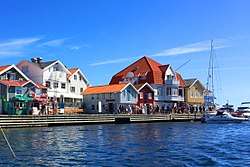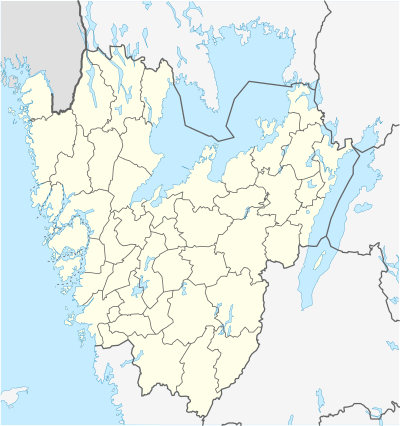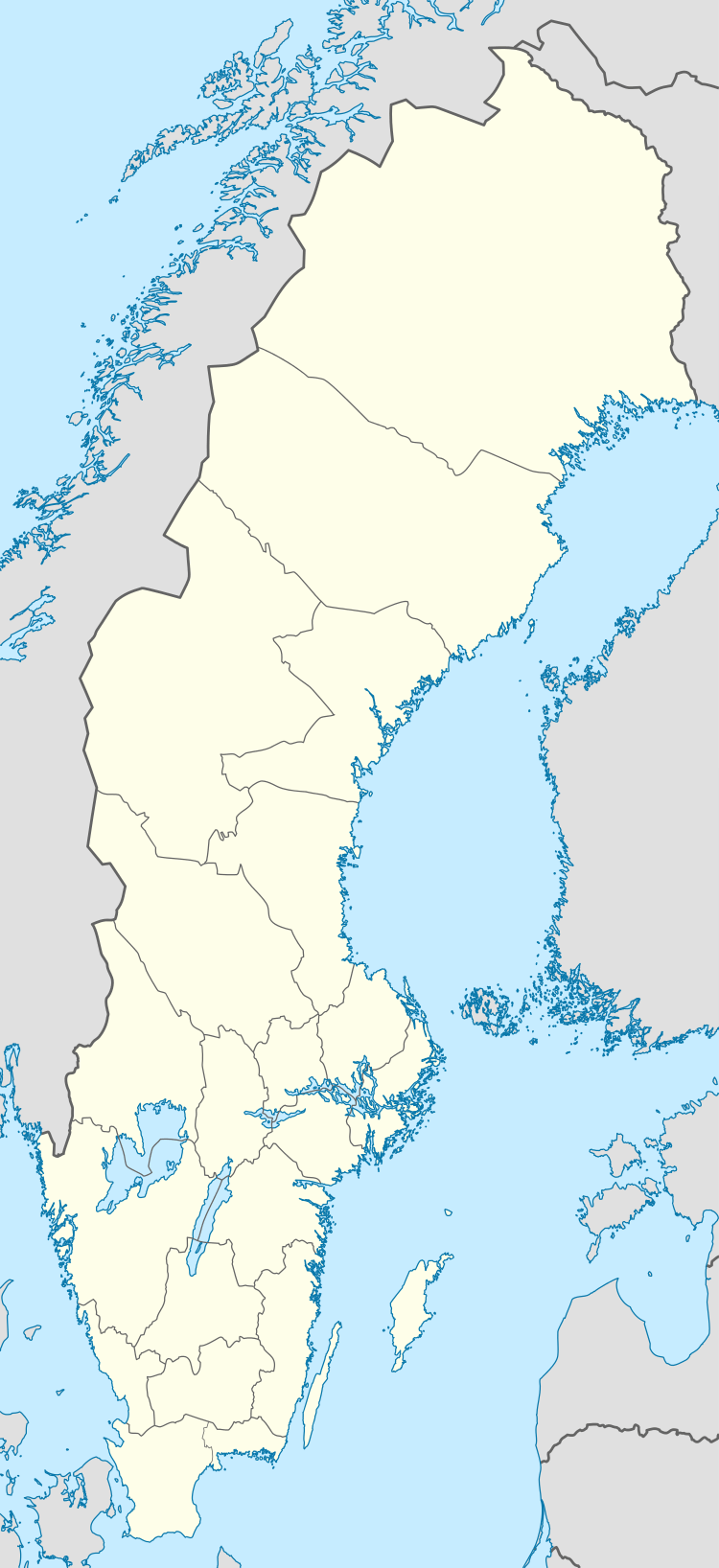Smögen
Smögen (Swedish pronunciation: [ˈsmø̌ːɡɛn])[2] is a locality in Sotenäs Municipality, Västra Götaland County, Sweden with 1,329 inhabitants in 2010.[1] It is one of the liveliest "summer towns" of the Swedish west coast.
Smögen | |
|---|---|
 | |
 Smögen  Smögen | |
| Coordinates: 58°21′40″N 11°13′55″E | |
| Country | Sweden |
| Province | Bohuslän |
| County | Västra Götaland County |
| Municipality | Sotenäs Municipality |
| Area | |
| • Total | 1.05 km2 (0.41 sq mi) |
| Population (31 December 2010)[1] | |
| • Total | 1,329 |
| • Density | 1,267/km2 (3,280/sq mi) |
| Time zone | UTC+1 (CET) |
| • Summer (DST) | UTC+2 (CEST) |
The community actually straddled several islands that lay so close together that the space in between has since been filled, and is now considered as a single island. The southern part consists mostly of Smögen Island, which lies in the centre. Around this lies to the south Kleven, in the northwest Sandön, and in the northeast, Hasselön. The town is connected to the neighbouring town Kungshamn by Smögenbron (Smögen Bridge).
History
Smögen is mentioned for the first time towards the end of the 16th century. The name of the community has varied over the years; amongst other names, from "Smögit", "Smöenn", "Smöget" and "Smygesund". The name has probably come from the Swedish word smyghål, which translates as "sneak-hole" or "nook", referring to the narrow inlet between the Smögen island and where the harbour lies. According to the Swedish Institute for Language and Folklore, the community's name comes from *smög, which has the same meaning and survives as smuga in Old West Norse and modern Bohuslän dialects.[3] Around the 17th century, the island Hasselön was populated, and through the years this community has grown together with Smögen, and is today considered a part of the Smögen community.
Tourism
.jpg)
In modern times, Smögen is well known for its long, wooden pier, about 600 m (2,000 ft), filled with shops in old fishing huts, which are frequented by a multitude of tourists during the summer. Smögen is one of the most popular tourist destinations on the Swedish west coast, well known for its fish, prawns and other seafood, and one of Sweden's few fish markets is located here. There is also an extensive nightlife scene, with many bars, clubs and concert venues open during the summer.
References
| Wikimedia Commons has media related to Smögen. |
- "Tätorternas landareal, folkmängd och invånare per km2 2005 och 2010" (in Swedish). Statistics Sweden. 14 December 2011. Archived from the original on 27 January 2012. Retrieved 10 January 2012.
- Jöran Sahlgren; Gösta Bergman (1979). Svenska ortnamn med uttalsuppgifter (in Swedish). p. 22 – via Project Runeberg.
- "Smögen". isof.se (in Swedish). Swedish Institute for Language and Folklore. 1 July 2018. Retrieved 12 March 2020.